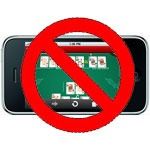IPhone Skyfire 2.0 Won’t Help with Mobile Gambling. . . Yet


No Skyfire Gambling
iPhone users and tech industry pundits have long lamented Apple’s ban of Flash technology which would make no-download casino games and many other web applications immediately available on Apple’s smartphone.
The new Skyfire browser, issued on November 4, seemed poised to change this. While Apple still won’t allow Flash to be interpreted on the iPhone, Skyfire offers a clever work around. Skyfire’s servers convert Flash content into the Apple-compliant web standard HTML5.
Unfortunately, this won’t help iPhone owners looking for mobile phone gambling just yet. At the moment, Skyfire only supports the conversion of video content, such as YouTube videos.
Nevertheless, hope remains. HTML5’s Canvas element, introduced by Apple inside the Mac OS X WebKit rendering engine – which powers Apple Safari, enables creative, skilled, and talented web developers to use JavaScript to create applications which previously would have required Adobe Flash, Sun-cum-Oracle Java, or Microsoft Silverlight. As a proof of concept, Google has already ported the classic first-person shooter, Quake II into HTML.
Moreover, both HTML5’s JavaScript and Flash’s ActionScript are both based on EMCAScript. The primary difference between these scripts is the object model. An expert JavaScript developer could create a compatible object in JavaScript to which an ActionScript could then be applied to. Tobias Schneider, for example, has developed Gordon, an open source Flash runtime written in JavaScript with SVG.
This implies it should be “relatively simple” for Skyfire’s developers to continue their work making available additional forms of Flash content, including no-download online casino games.
On the other hand, even if Skyfire or some other developers finally bring full Flash to the iPhone, online gamblers may still have some issues enjoying blackjack, slots, and other “instant” games. These online casino games, unlike the games at iPhone casinos, have been developed for desktops and laptops. The user interface elements won’t have been optimized for a mobile phone, the way (for example) a native iPhone application would be. For instance, no allowances will have been made for a smartphone’s tiny screen.





4 Comments
amazing how Apple can tie users hands so tightly, and yet still sell like hotcakes…
Consumers don’t read the fine print… they just know that Johnny is cool cause he has one and thye want to be just like him. Bloody sheeple.
amazing how Apple can tie users hands so tightly, and yet still sell like hotcakes…
Consumers don’t read the fine print… they just know that Johnny is cool cause he has one and thye want to be just like him. Bloody sheeple.